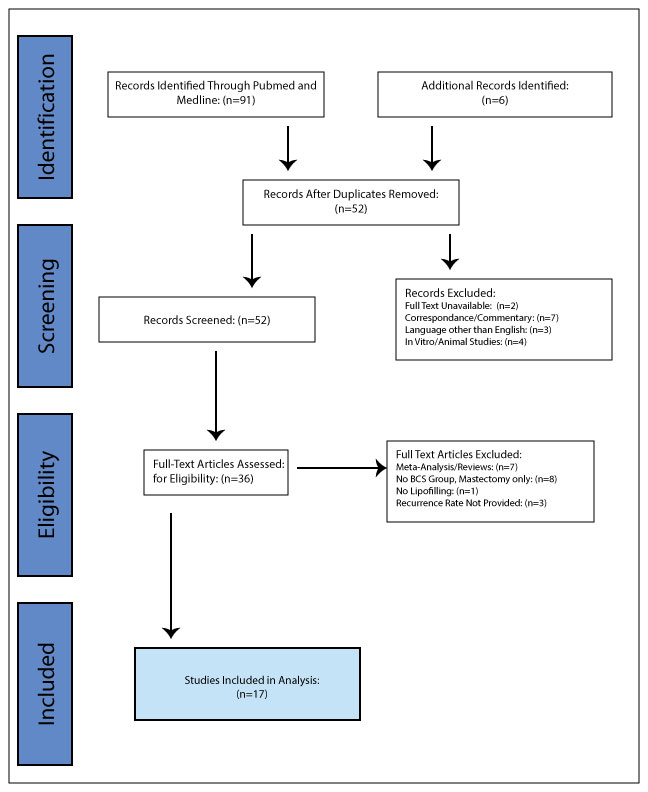Lipofilling after breast conserving surgery: A comprehensive literature review investigating its oncologic safety and a warning regarding its use in clinical practice
Stephanie Cohen, BS, BFA1, Yurie Sekigami, M.D.1, Theresa Schwartz, MD2, Albert Losken, M.D.3, Julie Margenthaler, MD4, Abhishek Chatterjee, MD, MBA1.
1Tufts University School of Medicine, Boston, MA, USA, 2St Louis University Hospital, St. Louis, MO, USA, 3Emory University Hospital, Atlanta, GA, USA, 4Barnes-Jewish Hospital, Washington University Hospital, St. Louis, MO, USA.
Background: Lipofilling has regenerative properties used to improve deformities after breast conserving surgery (BCS). Our hypothesis assumes there is inadequate data to ensure that lipofilling does not increase locoregional cancer recurrence after BCS.
Methods: A PRISMA comprehensive literature review was conducted investigating recurrence in patients who underwent lipofilling after BCS. All forms of BCS, fat grafting, and injection intervals were included. Patients undergoing mastectomy were excluded. Requirements to define lipofilling as “safe” included 1. A minimum follow-up period of 6 years from resection and 3 years from lipofilling 2. A sub-group analysis focusing on ER/PR/Her2 3. A defined time interval between resection and lipofilling 4. A control group 5. Adequate powering.
Results: Seventeen studies met search criteria. The range in time from BCS to fat injection was 0 months-291 months. The average time to follow-up after lipofilling was 23 days-40.2 months. 6 studies performed a subgroup analysis in cases of recurrence and found recurrence after lipofilling was associated with intraepithelial neoplasia, high grade histology, age <50, Ki-67 expression, and lipofilling within 3 months of primary resection. 15 of the 17 studies specified the interval between resection and lipofilling. Of the 8 studies that included a comparison group, none matched patients for Her2. Several studies deemed lipofilling “safe,” one showed association of lipofilling and local recurrence, and most studies concluded that further research was needed.
Conclusions: Insufficient data exists to demonstrate the safety of lipofilling after BCS. A multicentered, well designed study is needed to safely recommend this practice. 
Back to 2019 Posters
